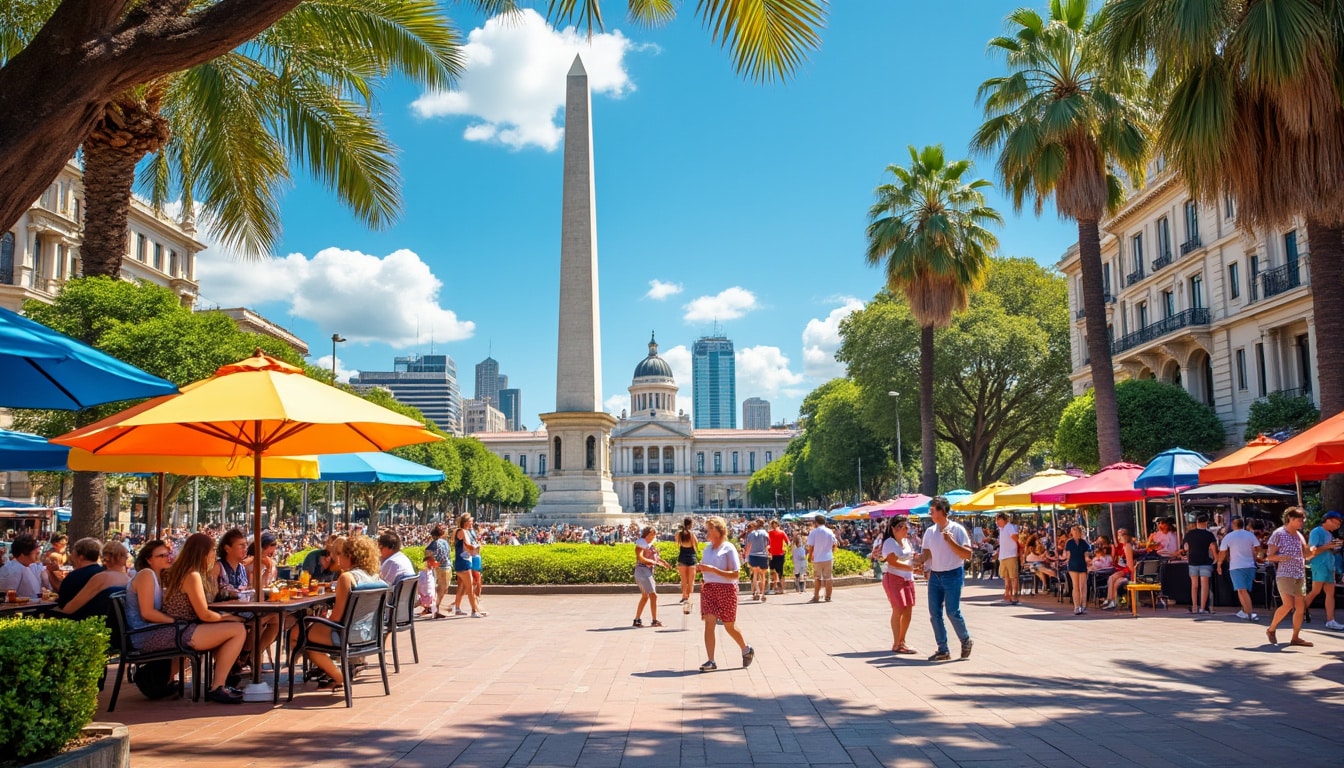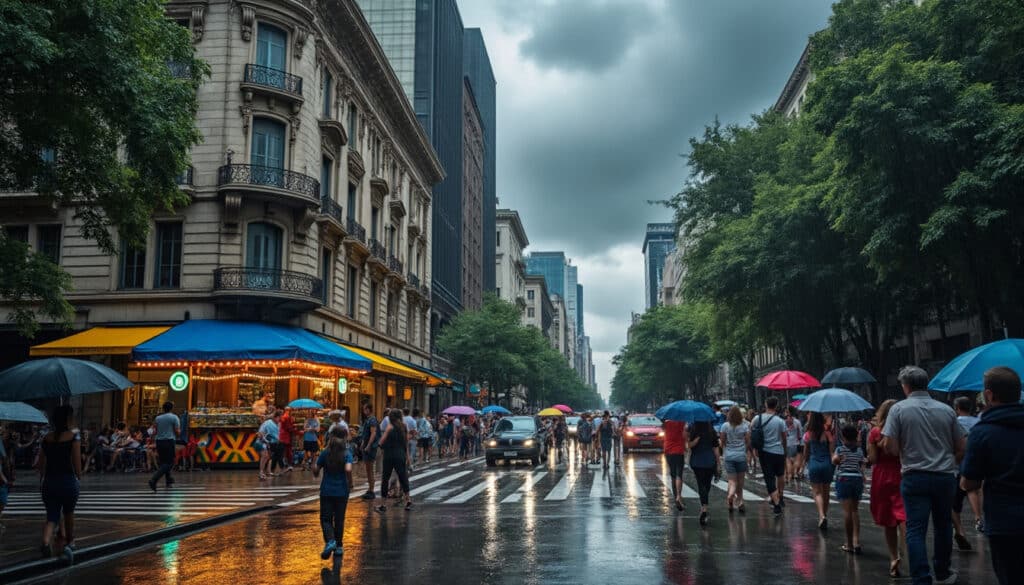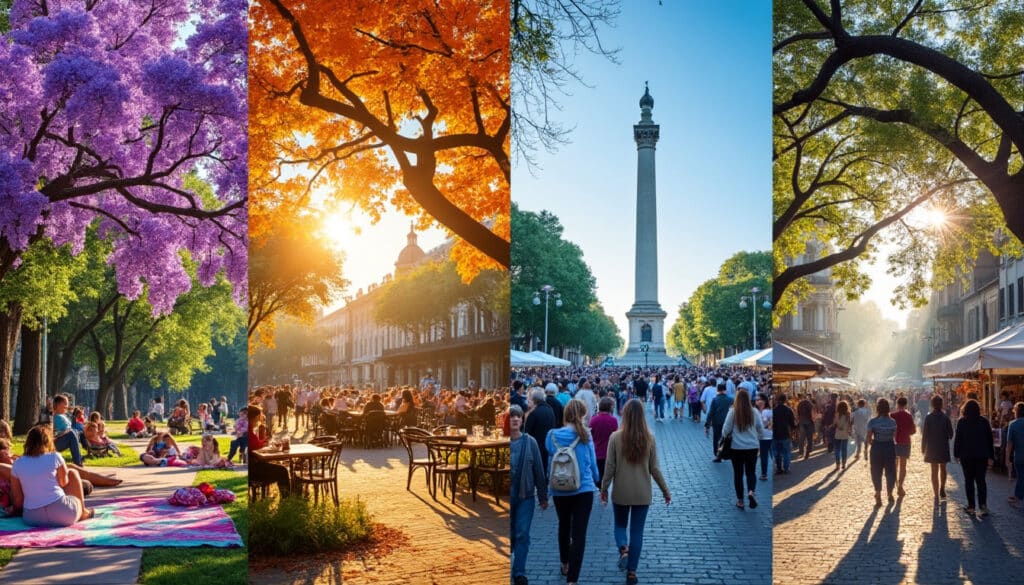Buenos Aires, the vibrant heart of Argentina, is a city where the rhythm of tango dances in harmony with the ebb and flow of its varied climate. The city’s temperatures are a fascinating dance between the warmth of summer sun and the crisp embrace of winter chills. This city, known for its breathtaking architecture and lively culture, also offers a climatic rhythm that is as intriguing as a tango itself. Whether you’re a resident or a traveler, understanding Buenos Aires’s climate is essential for navigating and fully appreciating this dynamic metropolis. Let’s delve into the rich tapestry of temperatures that define Buenos Aires, exploring each season’s unique offerings.
Summer Temperatures in Buenos Aires: A Dance of Heat and Humidity
Summer in Buenos Aires is a season where passion and intensity flow freely, much like a spirited tango under the stars. From late November to mid-March, the city experiences its warmest period, with average high temperatures soaring above 25°C (77°F). January stands out as the pinnacle of this heat, frequently reaching or exceeding 30°C (86°F). During these months, the city is enveloped in a warm embrace, with temperatures that can climb to dizzying heights, making summer a season for sun lovers.

However, with the warmth comes humidity, turning the air into a dense, palpable presence. The dew point rises, creating conditions that range from comfortable to oppressively muggy, particularly in January. According to WeatherTech data, this equates to approximately 15 days in January that are marked by high humidity levels, challenging those not accustomed to such conditions. Nights offer little respite, with temperatures rarely falling below 20°C (68°F).
Summer storms are frequent visitors during this period, providing dramatic afternoon spectacles that temporarily cool the city. These storms are often the result of the interaction between the Chaco Low and the South Atlantic High, intense systems that collaborate to produce dramatic weather shifts. Sudden downpours are common, with February witnessing an average rainfall of 129.3 mm (5.09 inches), thanks to the city’s placement in a humid subtropical zone.
While the intensity of the sun calls for precautions, such as sunscreen and hydration, it also offers a plethora of outdoor activities. From alfresco dining in shaded plazas to beach-like settings along the Río de la Plata, residents and visitors alike make the most of the sun’s liberating warmth. The bustling markets are vibrant with the throng of people enjoying the long days filled with sunshine.
Travel tips:
- 🌞 Stay hydrated and carry a bottle of water at all times.
- 🧴 Apply high SPF sunscreen to protect against UV rays.
- 🌧️ Be prepared for sudden thunderstorms; carrying a lightweight raincoat or umbrella is advisable.
- 🗓️ Plan activities either early in the morning or later in the evening to avoid the day’s peak heat.
| Month | Average High °C | Average Low °C | Average Rainfall (mm) | Days of Rain |
|---|---|---|---|---|
| December | 29°C | 19°C | 122.8 mm | 8.9 |
| January | 30°C | 20°C | 134.4 mm | 8.9 |
| February | 29°C | 19°C | 129.3 mm | 8.0 |
Winter Weather in Buenos Aires: Mild Yet Distinctive
Winter in Buenos Aires introduces a softer palette to the city’s weather canvas. From late May to August, the average high temperatures hover around a mild 16°C (60.8°F), while nighttime sees a cooler drop to approximately 8°C (46.4°F). July, the coldest month, experiences temperatures that can occasionally flirt with the colder end of the spectrum, reminding inhabitants of the season’s embrace.
Despite the chill, Buenos Aires winters are generally mild compared to other global cities at similar latitudes. Snow is a rare event; indeed, it has only touched the city thrice in over a century, with the most recent occurrence being during a remarkable cold wave in July 2007. Instead of snow, winters are more commonly defined by their winds and rain, particularly the famous Sudestada winds.
The Sudestada winds, typically occurring during winter, are caused by a high-pressure system in Argentina’s south interacting with a low-pressure zone over Uruguay and southern Brazil. These winds bring heavy rain and significant cloud cover, resulting in a dreary ambiance that contrasts sharply with the vibrant Buenos Aires summer.
Indoor activities blossom in these months, as the city becomes a hub for cultural experiences. Tango classes, cozy cafes, and museums offer shelter from the chill and invite exploration of the city’s rich cultural veins. Winter is also a time for traditional Argentine cuisine, with hearty dishes that warm the soul in the colder months.
Travel tips:
- 🧥 Pack layers to adjust to the varying temperatures throughout the day.
- 📅 Check weather forecasts regularly, especially if planning coastal excursions threatened by Sudestada winds.
- 🎭 Take advantage of indoor cultural activities to escape the chilly outdoors.
- 🍲 Explore local culinary delights that are best enjoyed in winter.
| Month | Average High °C | Average Low °C | Precipitation (mm) | Rainy Days |
|---|---|---|---|---|
| June | 16°C | 8°C | 61.5 mm | 7.3 |
| July | 15°C | 8°C | 74.4 mm | 7.4 |
| August | 17°C | 9°C | 70.3 mm | 7.0 |
Winter Winds and Their Impact on the City
While Buenos Aires lacks snowflakes, it compensates with a variety of distinctive weather patterns that make each winter unique. The Pampero winds are one such feature, sweeping in from the south or southeast, bringing cool, dry air with them. The Pampero’s arrival is often dramatic, marked by sudden drops in temperature and humidity, and occasionally, thunderstorms.
These winds not only refresh the cityscape but also clear the skies, offering bright days perfect for exploring the rich culture indoors. In contrast, the Sudestada can cause significant flooding, particularly in low-lying urban areas such as La Boca and Barracas, areas where the community is no stranger to river surges.
Winter in Buenos Aires is not merely a change in temperature but a season of transitions that affects daily life, from morning commutes to evening strolls. Despite the cooler weather, the city remains a bustling hub of activity and culture, with the cooler temperatures offering a respite from the sweltering summer heat.
Spring in Buenos Aires: A Time of Renewal and Color
The arrival of spring in Buenos Aires heralds a transformation in the city’s landscape, with nature awakening from its winter slumber. From September through November, this period is known for its mild climate, with daytime temperatures climbing to a pleasant 22°C (71.6°F), while cooler nights offer a refreshing contrast.
Spring is perhaps one of the best times to visit Buenos Aires, with its balanced climate and vibrant urban life. The weather is unpredictable, much like the city’s diverse cultural scene, with periods of rain followed by warm sun creating a kaleidoscope of microclimates within each day. This variability is largely due to the interactions between tropical and polar air masses, resulting in dynamic weather patterns unique to this region.
Nature lovers particularly enjoy the spectacle of jacarandas in bloom, painting the city with hues of purple and inviting leisurely strolls in parks such as the botanical gardens. The city’s cultural calendar also blossoms, with many outdoor events and festivals that draw locals and tourists alike.
Weather patterns of spring:
- 🌷 Variable temperatures and weather conditions.
- 🌦️ Frequent yet brief showers keeping vegetation lush.
- 🎉 A festival-rich period, enhancing the vibrant city atmosphere.
- 🌺 Spectacular blooms creating colorful urban landscapes.
| Month | Average High °C | Average Low °C | Precipitation (mm) | Rainy Days |
|---|---|---|---|---|
| September | 20°C | 11°C | 80.6 mm | 7.4 |
| October | 23°C | 13°C | 122.9 mm | 10.2 |
| November | 26°C | 16°C | 117.6 mm | 8.9 |
Spring’s allure lies in its promise of renewal and the myriad opportunities it presents for outdoor enjoyment. Whether it’s meandering through La Boca’s colorful streets or enjoying an outdoor concert, spring in Buenos Aires is a delightful blend of nature and culture.
Autumn Ambiance: The Golden Hues of Buenos Aires
Autumn, from March to May, is a time of golden transformation in Buenos Aires, offering a harmonious blend of weather that bridges the fierce summer and the gentler winter months. This season experiences mild to warm afternoons with temperatures averaging around 23°C (73.4°F), and by night, they mellow to comfortable lows of approximately 14°C (57.2°F).
Autumn in Buenos Aires presents an inviting atmosphere for both residents and tourists. The city is bathed in soft, gauzy sunlight that highlights its architectural beauty with an ethereal quality. The falling leaves add a rustic charm to the parks and avenues, offering scenic walks and a tranquil break from the urban bustle. It’s the perfect season for strolling through Palermo Woods or along the historic San Telmo streets, enjoying the gentle weather.
During this season, Buenos Aires enjoys a rhythm that’s both lively and relaxed, without the intensity of summer storms or the chill of winter. Continuity in climate allows for both strategic urban planning and seasonal events, such as the international book fair and the documentary film festival, which are cornerstones of the city’s cultural life.
Autumn highlights:
- 🍁 Warm afternoons transitioning into cool evenings, inviting diverse wardrobe choices.
- 📚 Cultural festivals providing enriching experiences for locals and visitors.
- 🏞️ Beautiful transformations in parks and gardens, perfect for photography and leisure.
- 🛍️ An ideal season for shopping trips and explorations without the harsh weather extremes.
| Month | Average High °C | Average Low °C | Precipitation (mm) | Rainy Days |
|---|---|---|---|---|
| March | 27°C | 18°C | 120.0 mm | 8.2 |
| April | 23°C | 14°C | 130.3 mm | 8.9 |
| May | 19°C | 11°C | 93.5 mm | 7.2 |
The Impact of Climate Change on Buenos Aires Weather Patterns
In recent years, climate change has begun to alter weather patterns globally, and Buenos Aires is not immune to these changes. Argentina’s capital has seen shifts in the frequency and intensity of weather events, from prolonged heat waves to erratic rainfall patterns. These changes pose challenges to both urban planning and daily life.
One significant concern is the increasing heat waves. Prolonged periods of high temperatures test the city’s infrastructure, as seen in the 12-day heatwave of March 2023, leading to power shortages and calls for sustainable energy solutions such as EcoTherm and Tempest technologies. The urban heat island effect exacerbates these conditions, as the dense cityscape retains heat.
Additionally, Buenos Aires’s proximity to the Río de la Plata increases its vulnerability to flooding. Sudestada events, along with rising sea levels, pose a risk to low-lying areas and emphasize the need for improved flood management strategies. Technologies like Climate Control systems have become crucial in mitigating these impacts.
The unpredictability of precipitation has significant implications for agriculture in the surrounding provinces, impacting food security and economics. Residents and policymakers are increasingly looking to innovative solutions such as CoolerMaster’s temperature regulation technologies to adapt to these shifting conditions.
Responding to climate challenges:
- 🌍 Adapting urban planning to include green spaces and improved drainage systems.
- ⚡ Investing in sustainable energy solutions to cope with increased demand during heat waves.
- 🌧️ Implementing advanced flood defenses and drainage systems to protect against flooding.
- 🌱 Encouraging agricultural resilience through advanced Climate Control practices and technologies.
| Challenge | Impact | Proposed Solution |
|---|---|---|
| Heat Waves | Energy shortages, health risks | Sustainable energy solutions like EcoTherm |
| Flooding | Property damage, infrastructure strain | Advanced drainage and Climate Control systems |
| Erratic Precipitation | Agricultural uncertainty | Resilient practices and CoolerMaster technologies |
Frequently Asked Questions
In understanding the complex climate of Buenos Aires, several frequently asked questions arise:
- ❓ What is the best time to visit Buenos Aires?
The best time lies between late October and mid-April, where the climate is warm and conducive to outdoor activities.
- ❓ How does climate change affect Buenos Aires?
It’s altering seasonal patterns, increasing the frequency of heat waves, and posing flood risks due to rising sea levels.
- ❓ Are tornadoes common in Buenos Aires?
Rarely, although conditions can occasionally allow for their formation, particularly during severe storms in summer.
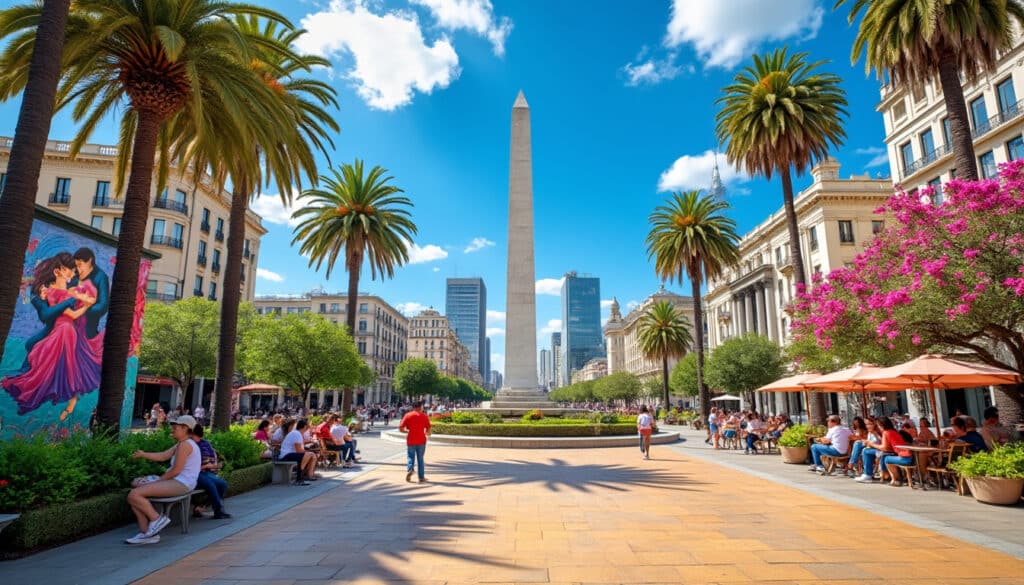
Climate & Weather in Buenos Aires
The mesmerizing city of Buenos Aires, where the tango rhythms and historic architecture intertwine, offers a climate as multifaceted as its vibrant culture. As Argentina’s bustling capital, it entices travelers year-round with a warm, humid subtropical climate. Visitors wander through…
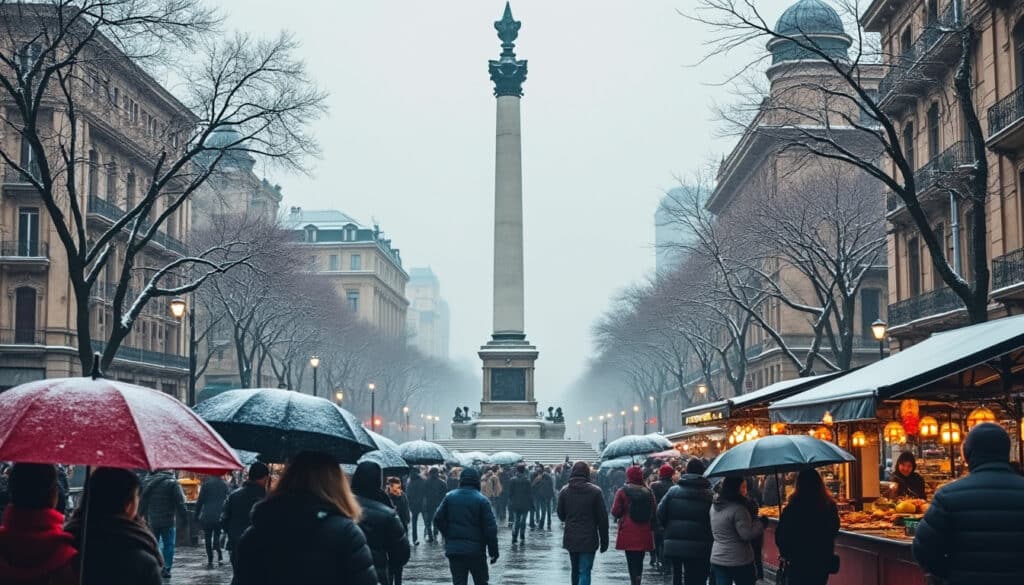
When thinking about Buenos Aires, images of vibrant tango, bustling streets, and warm climates might come to mind. However, the story of Buenos Aires includes the lesser-known cold weather that grips this fascinating city during the winter months. This unique…

Flooding and natural risks in Buenos Aires
Buenos Aires, a city known for its vibrant culture and bustling streets, faces significant challenges from natural risks, particularly flooding. As climate patterns shift and urban areas expand, the frequency and intensity of these occurrences have escalated, affecting both the…
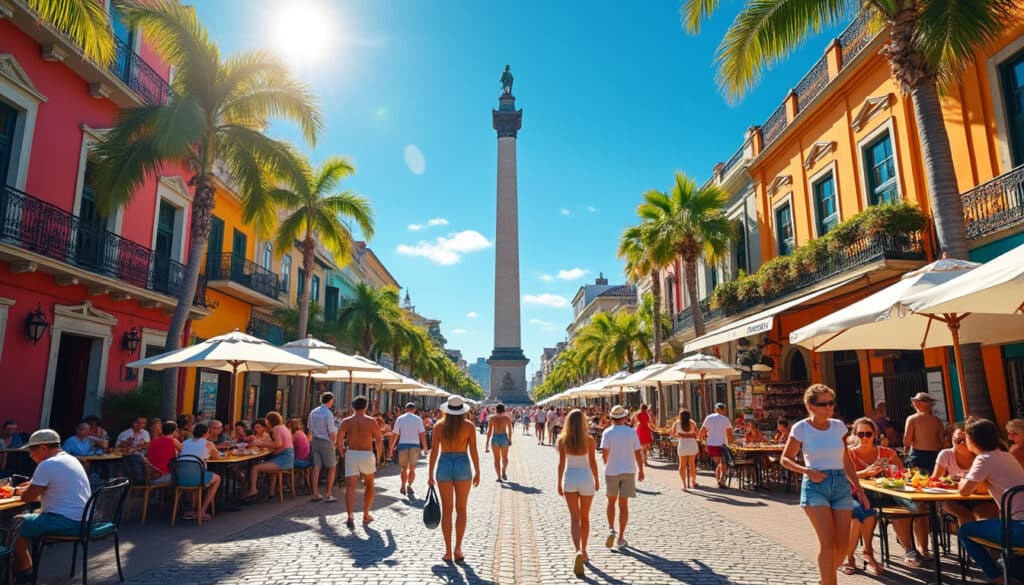
The vibrant city of Buenos Aires is not only famous for its tango beats and cultural richness but also for its unique weather patterns that shape the life of its residents and captivate the imagination of visitors. As we step…

Is Buenos Aires warm throughout the year?
Buenos Aires, the bustling capital of Argentina, with its lively tango rhythms and vibrant culture, poses a climate allure just as engaging as its colorful streets. As one of South America’s popular tourist destinations, understanding the city’s weather patterns remains…
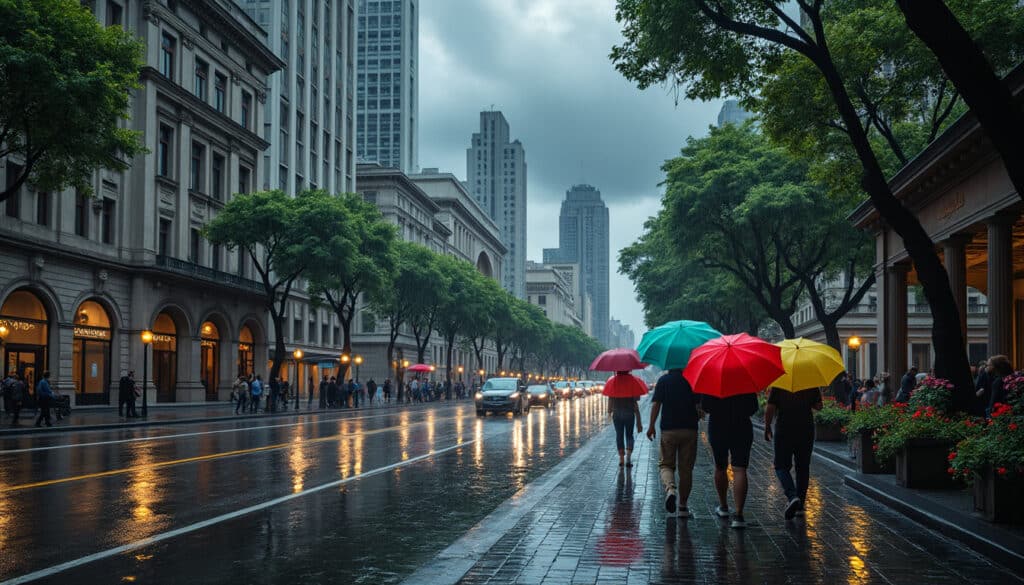
Rain and precipitation in Buenos Aires
Buenos Aires, a bustling metropolis known for its vibrant culture, tango music, and exquisite cuisine, experiences a complex and diverse climate that might surprise both residents and tourists. This city, located on the southeastern coast of South America, is graced…

Buenos Aires, the vibrant capital of Argentina, is bustling with life around the clock. Understanding the city’s sunrise times can significantly enhance one’s experience, whether you’re planning a morning run at the costanera, a photo session at the iconic Obelisco,…
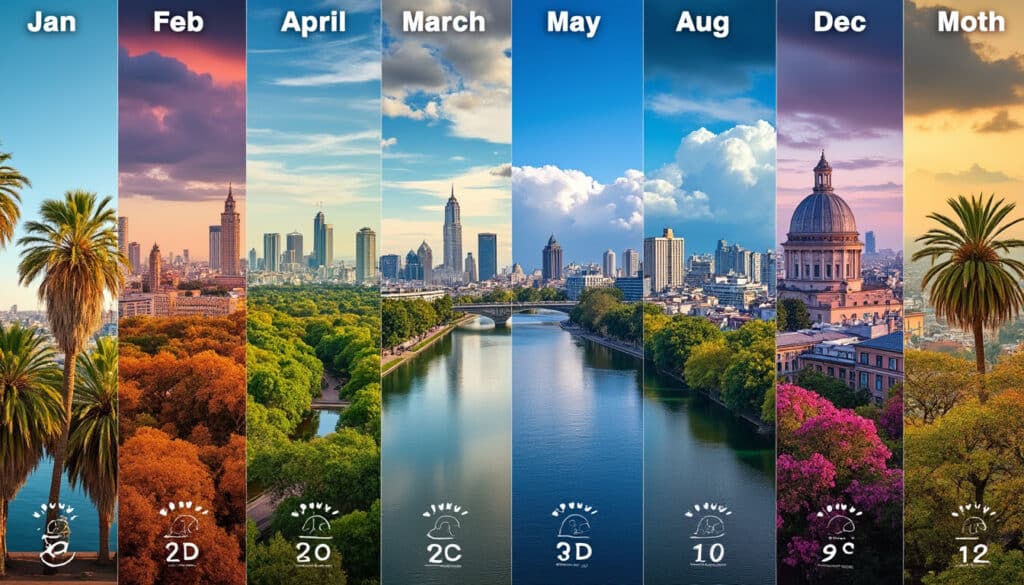
Weather in Buenos Aires by month
Buenos Aires, with its rich tango culture and vibrant city life, offers a distinct climate experience throughout the year. The city’s weather varies significantly between the warm, humid summers and the mild, fog-kissed winters. Understanding Buenos Aires’ weather patterns can…

What is the weather like in Buenos Aires?
Buenos Aires, known for its vibrant culture and lively atmosphere, boasts a weather pattern that is as varied as the tango rhythms that echo through its streets. Travelers arriving in the city are often greeted by a climate that is…

